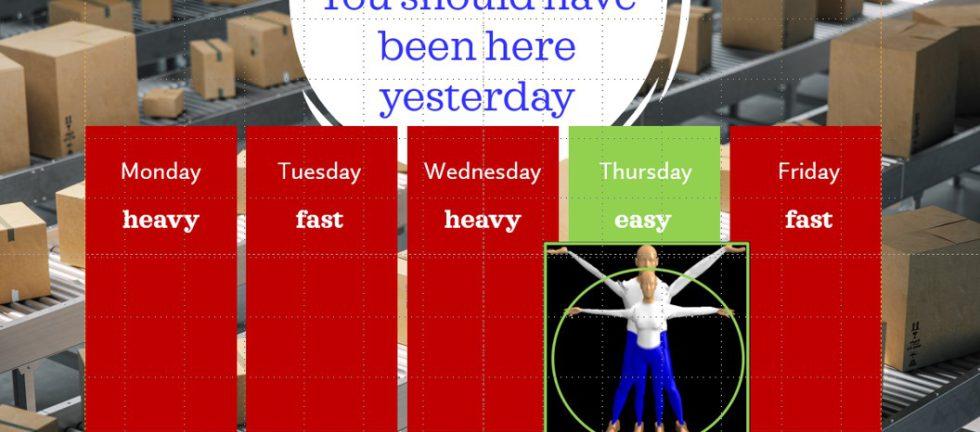If I had a nickel for every time I heard this sentence, I’d be rich. (Well, I’d have a big pile of nickels, and some of them would be old enough to be worth more than a nickel.) We seem to consistently arrive the day after the hardest work conditions. Why is that?
It’s likely because those challenging work conditions are, thankfully, rare; it’s unlikely that they will randomly occur on the day that an assessment is scheduled. We still do our best to assess job demands based on both the “typical” and “worst-case” scenarios.
How do we do this?
- Firstly, we do try to see it. Staff ergonomists, and our “on-site” ergonomists do their analysis and writing on-site (where possible), so if these “hard” tasks occur when we’re on the premises, we ask to be called out to observe. This “on-site” approach more than doubles the chances of catching these important tasks, compared with a more traditional consulting approach. Most consultants gather information and then go back to their office to process it, so they are not available in the workplace for very long. Many of our clients schedule us on a one- or two-day per week basis. This allows us the flexibility to work on whatever is “hot” and fill the gaps between with analysis, writing, and implementation support.
- If we see the job running at a “slow” production rate, but it sometimes runs faster, we can use the faster rates in our “worst-case” risk assessment.
- If we are not able to see the “heaviest” parts or the “tight-fitting” parts in production, we might be able to find scrap parts, or not-yet-shipped parts, to help us to understand how the job is different under “worst-case” demands. Similarly, we can ask workers to explain and help us measure forces, quantify fit issues, line-of-sight inspection issues, or awkward gripping or reaching.
We don’t like to hear that we’re missing the important part, but we do take steps to ensure that an assessment considers both typical and worst-case conditions. It’s important for us to know whether “what we see” represents the “normal” condition or the “hardest” condition, and then we need to observe or model what we don’t see. So even if we can’t do anything about missing “yesterday”, we can do our best to re-create those work conditions.


